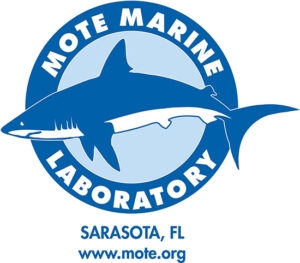2019 | Red Tide Impacts

FACULTY SEED GRANT | Global Change Center
Measuring, modeling, and forecasting red tide aerosol dispersion along the central Florida gulf coast to facilitate socio-economic adaptation
INVESTIGATORS:
- Dr. Klaus Moeltner, Agriculture and Applied Economics
- Dr. Hosein Foroutan, Civil and Environmental Engineering
- Dr. Shane Ross, Aerospace and Ocean Engineering
- Dr. David Schmale, School of Plant and Environmental Sciences
This study is funded jointly by the Global Change Center at Virginia Tech and the Institute for Society, Culture and Environment (ISCE).
Blooms of the marine dinoflagellate Karenia brevis, generally referred to as “Red tides” (RT), have increased in frequency, intensity, and geographic spread along the Florida gulf coast in recent years (e.g. Alcock, 2007; Fleming et al., 2011; Corcoran et al., 2013). Karenia brevis produces a suite of neurotoxins known as brevetoxins that can result in massive mortalities to fish, birds, and marine mammals. Brevetoxins may also become airborne via oceanic wave breaks and, in this form, travel great distances. In humans, this can produce severe and lasting respiratory irritation, especially for people with chronic conditions, such as asthma (Backer et al., 2003; Fleming et al., 2011; Kirkpatrick et al., 2011).
2017/2018 the central Florida gulf coast experienced the worst and longest RT episode in decades (e.g. Wei-Haas, 2018). This has brought issues of mitigation and adaptation to the forefront of scientific and political discussion. Crucial to both, however, is the availability and quality of spatially and temporally refined forecasting models for airborne brevetoxins. Currently, Mote Marine Laboratory (MML), located in Sarasota, the recent “epicenter” of RT blooms, offers a twice daily “Beach Conditioning Report” by citizen scientists for local beaches (MML, 2019). These reports give only the current conditions (the “nowcast”) and do not specify actual brevetoxin concentrations, but rather perceived irritation levels (from “none” to “high”). Moreover, no information is given via this system on brevetoxin levels further inland, where the majority of the population resides. At a coarser spatial and temporal level, the National Oceanic and Atmospheric Administration’s National Ocean Service (NOAANOS) issues twice-weekly RT condition reports for three-to-four-day periods on a county-by-county level (NOAA, 2019). The accuracy of these forecasts have not yet been quantified.
Research objective 1: Develop a fine spatial scale forecasting system for brevetoxins for the central gulf area that covers a broader coastal band, using real-time wind, aerosol concentration, respiratory effects data and weather forecasts. This objective will also employ novel air sampling technology developed at VT.
Research objective 2: Determine the socio-economic benefits of such an improved forecasting system to the general population via focus groups and a pilot survey to determine how RT irritation affects local households’ daily life, and how improved forecasting would help them better prepare for the next day. The survey will also generate first estimates of the dollar-valued per household benefits (WTP) for the envisioned forecasting system, and first insights into the possibility to recover costs of the forecasting system via publicly collected funds.
Research objective 3: Foster ties between Virginia Tech and the Mote Marine Laboratory, the premier clearinghouse for RT research in the gulf area.
UPDATE: Field visit Dec. 2-5, 2019
PIs Foroutan, Moeltner, and Ross, reinforced by senior research associate Regina Hanlon, and graduate student Landon Bilyeu, visited the Sarasota, FL, region in early December. The primary objectives of the field visit were to (i) take air and water samples along local beaches, (ii) run focus group sessions to learn how red tide-impacted air quality has affected local residents, and (ii) meet with researchers at Mote Marine Laboratory to explore avenues for collaboration for this project and other red tide-related research challenges.
The visit also included a reception at the Bird Key Yacht Club to socialize with colleagues from Mote Marine. The reception was generously hosted by Jonathan and Michelle Mitchell, local residents and Mote supporters.











